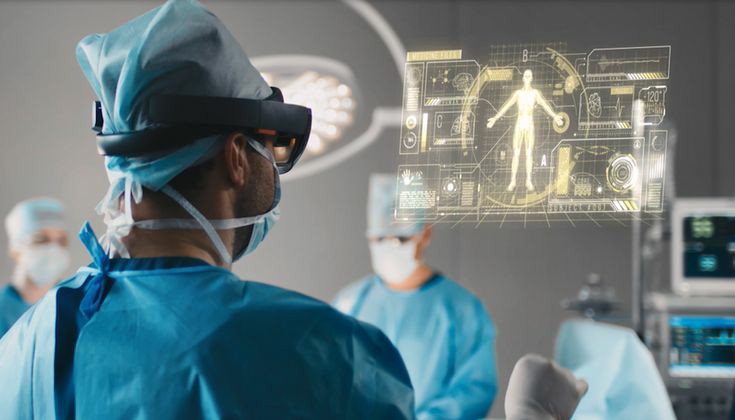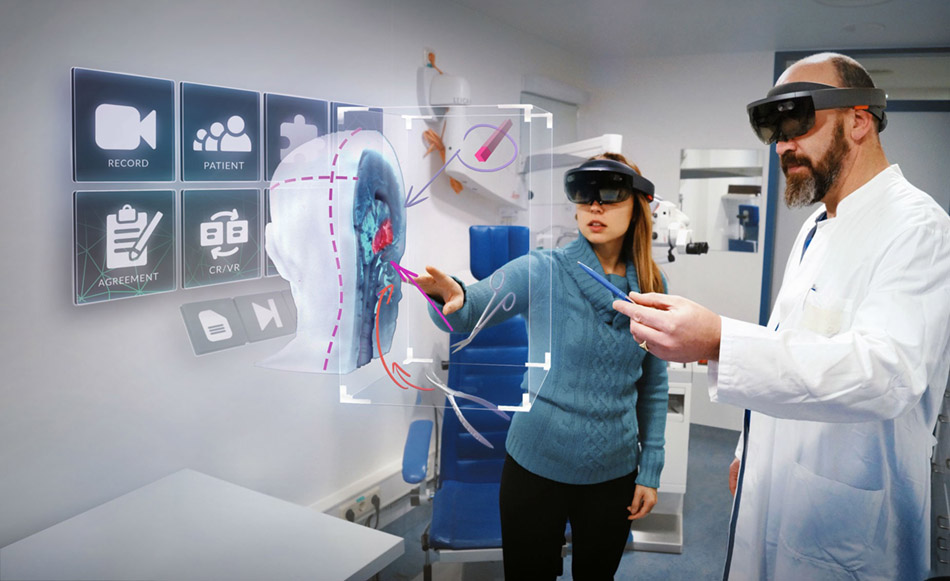Augmented Reality (AR) is one of the most cutting-edge technologies that can be effectively applied in the operating room. While doing the operation, looking into a 2D flat screen to monitor the visual data would force the operating room staff to look away from the patient and also their own operating hands. Using AR technology could bring several benefits for healthcare providers as well as patients. In the following article, we will discuss different aspects of applying AR in surgery.
A great change in displaying by AR
The role of imaging in medical diagnosis and treatments is among some of the greatest advances in medical sciences. Using several methods such as Computerized Tomography (CT), Ultrasonography, Magnetic Resonance Imaging (MRI), and Mammography become possible for better and faster diagnosis. But what about operation rooms and emergency sections?
In the last few decades, 2D flat screens have been presented in operation rooms and emergencies to help surgeons gain more effective results during the procedure. Yet, could these screens could be as efficient as those in diagnosis? What are the challenges of using these kinds of screens?
First of all, the doctors and operation room staff have to look away from the patient and also from their own hands while doing the operation to monitor the patient’s status. Further, the images are shown from the device perspective, not from the doctors’ viewing angle; indeed, it is all about the ability and skill of doctors’ imagination to progress the operation based on mentally projecting the images into the patients’ bodies. Last but not least, different forms of visual data are shown partly and separately; so, the doctors should pay additional undeviating attention to multiple mentally fusing several image types into a logical and coherent structure.
Taking all these into consideration, it sounds like Augmented Reality could be the best tool to address these kinds of challenges. Relocating the displaying information from several 2D monitors into a tangible format to turn the operation in an easier, safer, and much more precise form sounds more promising.
How does AR work in the operation room?

AR as an advanced set of technologies has the key feature to superimpose the patients’ digital information into the physical world. By using a headset or a pair of glasses, the doctors are capable of observing accurate and crucial data in front of their eyes overlaid on the patients’ bodies.
It means surgeons would receive unprecedented real-time insight during the operation procedure as an accurate surgical target in the patient’s body, information about anesthetic information or heart rate for an instant, are immediately integrated into their headset or glasses’ visor. Even more in 3D modeling, AR is helpful in localizing tumors or infectious tissues by applying X-ray vision without any need to contact with radiation.
The benefits of applying AR in surgery

Surgical procedures both in operation rooms and emergency sections could take great advantage of augmented reality. Let’s have a look at some of these benefits:
1) By using precise data gained by AR, some serious medical errors especially for surgeries out of the operation room will be decreased. Lacking proper and professional devices out of the operating room and in emergency cases might cause severe consequences.
2) By applying augmented reality, all the operation room members have precise pre-operative images to get the best results from well-planned procedures. Anesthesiologists could easily monitor all aspects of a patient’s physiology and supervise all essential medications. Likewise, surgical nurses make certain of all demanded equipment to be prepared and available. Surgeons could be thoroughly immersed in the operation procedure without any distraction.
3) As a consequence of using AR in hospitals, it is possible to reduce the great amount of money being spent on numerous displaying screens which have to be connected to different devices such as ultrasound or endoscopy. AR can provide a shared display for monitoring and analyzing all patients’ data in real time.
4) AR is even helping medical centers to have a much faster, cheaper, and more convenient tool for trainees to get ready in the field of surgery by practicing all procedures before entering the operating room.
Conclusion
Augmented reality is one of the most appreciable technologies that can make surgery much safer and promising. AR displays integrated patient data to help the surgeon and other operation room staff and even in emergency sections keep their eyes on the patient’s body accordingly improving quality and reducing cost.
Applying AR in surgery will be a paramount important part of future hospitals. If you want highly professional medical illustrations , you can order your request or contact with the Inmywork.com team.






Leave a Reply